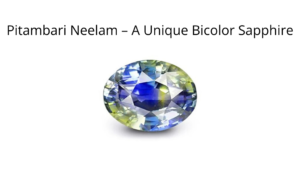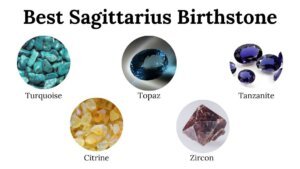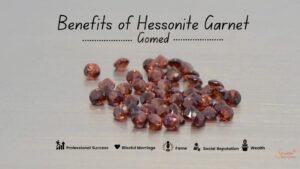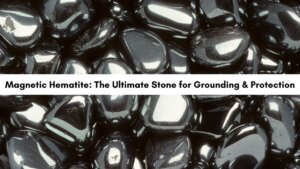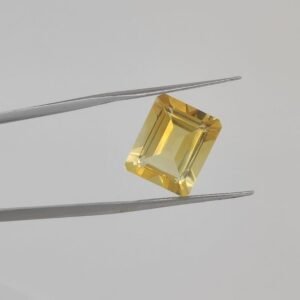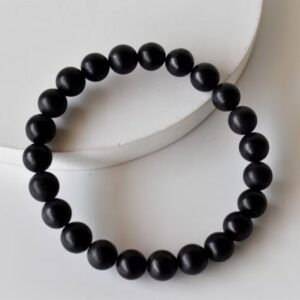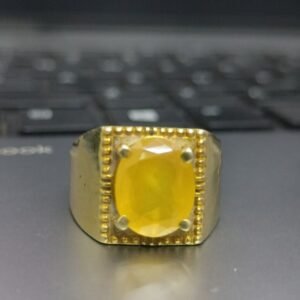When shopping for gemstones, one of the most important goals is to ensure you are acquiring original gemstones, not imitations or synthetics passed off as real. Genuine gems hold value, beauty, and often sentiment or investment potential. However, unscrupulous sellers can use clever tricks, taboos, or lack of knowledge to mislead buyers. In this guide, we will walk you step by step through how to identify original gemstones—from understanding the types to performing simple tests, checking weight and temperature, and ensuring you buy from a trusted seller.
By following this complete guide, you will be equipped with the knowledge to buy with confidence when dealing with original gemstones. Before you test anything, you must first know the landscape: what kinds of gemstones exist, and how original gemstones differ from imitations, synthetics, and treated stones.
Natural Gemstones vs. Synthetic and Treated
Natural gemstones are formed by geological processes in the earth over long periods. These are truly original gemstones, in the sense that they are naturally occurring with unique inclusions, internal structure, and light behavior.
Synthetic gemstones are created in laboratories to mimic natural stones. Chemically and physically, they may be nearly identical to natural stones, but they are not truly original gemstones in the geological sense.
Treated gemstones are natural stones to which color enhancement, heating, irradiation, or other processes have been applied. While they may still be considered original to some extent, the treatment must be disclosed. Some buyers still want wholly untreated original gemstones.
Common Gemstone Types
- Familiarize yourself with common gemstone types so you can spot inconsistencies:
- Ruby, sapphire, emerald, diamond — high-value “precious” gemstones
- Amethyst, citrine, garnet, peridot, topaz — popular “semi-precious” stones
- Quartz, agate, jasper, opal — abundant and frequently imitated
- Other gems like spinel, tourmaline, zircon, tanzanite can also be targets for fakes
Each gem type has characteristic color, hardness, and optical appearance. When you understand what the real stone should look and behave like, you are better able to distinguish original gemstones from impostors.
Check for Gemstone Certification

One of the strongest tools in your arsenal when buying original gemstones is a credible certificate issued by a recognized gemological laboratory. Always ask for certification before purchase.
Reputable Gem Labs
Some well-known gem laboratories whose reports carry weight include:
- GIA (Gemological Institute of America)
- IGS (International Gem Society)
- AGL (American Gemological Laboratories)
- Gübelin
- IGTL / IGTLab
- IGS / IGTL
A legitimate certificate will include a unique report number, photograph or diagram of the gemstone, and details like:
- Gem type and species (e.g. ruby, corundum)
- Weight (carats)
- Measurements
- Color grades
- Clarity / included features
- Treatments, if any
- Origin (if determinable)
- Comment on whether the gemstone is natural, synthetic, or treated
If a seller resists giving you a certificate or tries to substitute a dubious lab, treat it as a red flag. Asking for certification helps assure you are getting original gemstones rather than fakes.
How to Verify the Certification
Cross-check the lab’s report number on the lab’s official website or database. Ensure the gem photograph/diagram matches the stone you are purchasing. Validate the lab’s legitimacy—some fake labs issue certificates for synthetic stones but call them “original gemstones.” Make sure the report describes whether treatments were applied to the stone.
Visual Inspection – What to Look For
Before you even conduct advanced tests, a thorough visual inspection can reveal many clues about whether a gemstone is truly original.
Color Consistency and Saturation
Original gemstones usually have natural color variation—completely uniform color may suggest dyeing or synthetic origin. Check for zones of darker or lighter color, natural gradients, or pleochroism (display of different colors from different angles) in certain stones (like sapphire or tourmaline).
Inclusions, Blemishes and Natural Flaws
Original gemstones will often have microscopic inclusions—tiny crystals, needles, mineral spots, feathers, or liquid-filled cavities. An absolutely perfect, inclusion-free gem may very well be synthetic or heavily treated. Use a 10x loupe or magnifying glass to inspect for internal characteristics.
Surface Features: Luster, Polish and Facets
Examine how the gemstone reflects light. Natural stones often display subtle inconsistencies in polish or facet edging. Sharp facet edges, perfect symmetry, or overly sharp and uniform facets might indicate a fabricated or synthetic piece rather than original gemstones.
Check for Bubbles or Curved Striations
Gas bubbles are telltale signs of glass or synthetic materials. Curved growth patterns or striations (common in some synthetic gems) are generally not present in original gemstones.
Color Fluorescence Under UV Light
Some original gemstones fluoresce under ultraviolet (UV) light. For example, many diamonds glow blue under UV, but synthetics might fluoresce differently. However, fluorescence can also be manipulated, so it’s just one clue—not definitive proof.
Common Gemstone Tests (At Home and Lab)
After the visual inspection, you can perform some common tests—some at home, some requiring a professional lab—to further confirm authenticity of original gemstones.
Hardness Test (Mohs Scale)
Use the known hardness scale for gemstones (e.g., diamond = 10, corundum = 9, topaz = 8, quartz = 7). Scratch the stone with a reference material of known hardness (or vice versa). A natural ruby (hardness 9) should not be scratched by quartz (hardness 7), for example. Be careful: improper scratching may damage the gemstone. Use cautious minor abrasion only on inconspicuous area or a less valuable stone.
Refractive Index (RI) Measurement
Many gem labs and advanced amateurs use a refractometer to measure the refractive index (RI) of the gemstone. Each gemstone species has a known RI range (for example, quartz ~1.54–1.55; sapphire ~1.76–1.78). If your measurement matches the expected value, it increases confidence in original gemstones. Synthetic imitations often have slightly different RI values.
Specific Gravity / Density Test
This involves measuring the weight of the stone in air vs. in a liquid, then calculating density. Original gemstones have known density ranges (e.g. diamond ~3.52 g/cc, sapphire ~4.0 g/cc). A big deviation could indicate a fake or simulant.
Spectroscope / Absorption Spectrum
Using a gemological spectroscope, you can observe absorption lines (dark bands) in different wavelengths of light. Different gemstone types have characteristic absorption lines—the presence or absence of certain lines can help verify authenticity.
Thermal Conductivity Test
Some devices (especially for diamonds) test how quickly heat moves through the stone. Diamonds are exceptional conductors of heat, whereas glass or many fakes are not.
Note: some simulants or moissanite may also conduct heat similarly—so this test is not foolproof for all gems.
Other Advanced Lab Tests
X-ray diffraction or X-ray fluorescence (XRF) can detect elemental composition.
Infrared spectroscopy (FTIR) or Raman spectroscopy can precisely identify the molecular structure. Inclusion analysis under a gemological microscope can pinpoint origin or synthetic features. Though these are lab-grade tests, they can definitively confirm whether a gemstone is truly one of the original gemstones (i.e. a natural, untreated specimen).
Weight and Temperature Check
Two simpler, accessible tests—weight comparison and temperature behavior—can provide useful hints about whether a gemstone is authentic.
Weight Check (Heft Comparison)
Original gemstones of equal size often feel heavier than glass or plastic imitations. If possible, compare a suspect gem with a known genuine stone of similar size and cut. If the stone feels unusually light, it could be a fake or composite rather than original gemstones.
Temperature Sensitivity (Touch Test)
Natural gemstones typically feel cool to the touch initially and maintain low thermal conductivity. Hold the stone in your fingers—if it warms quickly or stays warm, it might be a synthetic or imitation (e.g. glass, plastic). Diamonds and many true gemstones “feel cold” longer than common glass fakes. While weight and temperature tests are not definitive, when combined with visual inspection and certification, they help build confidence in confirming original gemstones.
Buy from Trusted Sellers Only
Ultimately, the most reliable safeguard against acquiring a fake is to deal with reputable, trusted sellers. Here’s how to pick a trustworthy source for original gemstones.
Research the Seller’s Reputation
Look for long-established sellers with good reviews, both on marketplaces and independent gem forums. Ask for references or customer testimonials. Check whether the seller is a member of recognized gem associations (e.g. AGA, AGTA, local gem councils).
Ask for Full Disclosure
A trustworthy seller will openly share information about treatments, origin, and certification. Insist on a detailed invoice that states the gemstone type, weight, measurements, and treatment status. If the seller claims “100% original gemstones” but refuses to show treatment history or certificates, it’s a red flag.
Return Policy and Guarantees
Opt for sellers who provide return or buy-back guarantees. A robust return policy indicates that the seller stands by the authenticity of their goods. Some sellers even offer gemstone “lifetime authenticity guarantee”—but still always verify details in writing.
In-Person Buying Tips
When buying from local gem stores or fairs, bring your own loupe, scales, or even a small refractometer (if feasible). Conduct your own checks (visual, weight, temperature) while at the vendor site. If possible, bring along a third-party gemologist or acquaintance experienced with original gemstones to assist.


